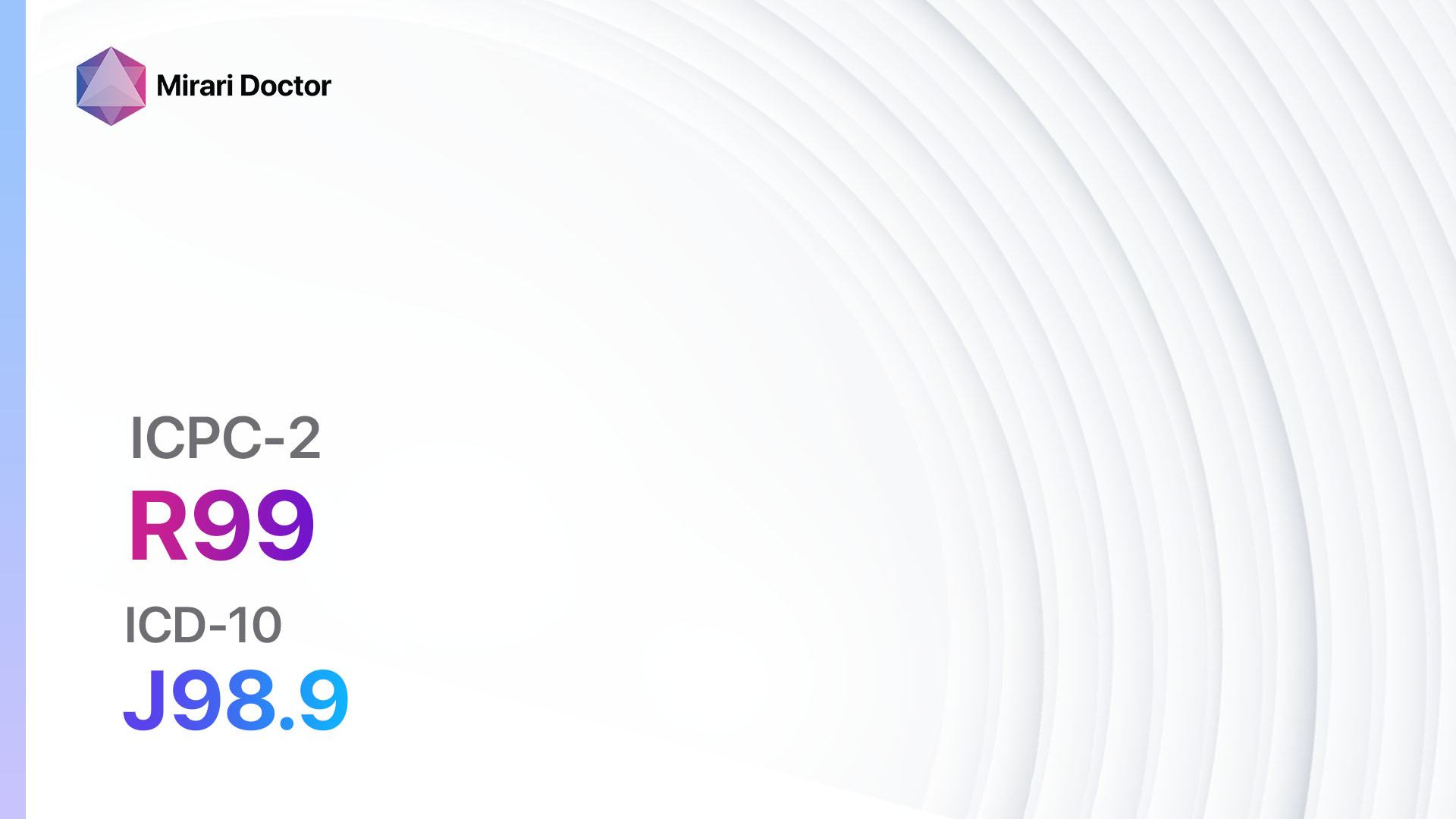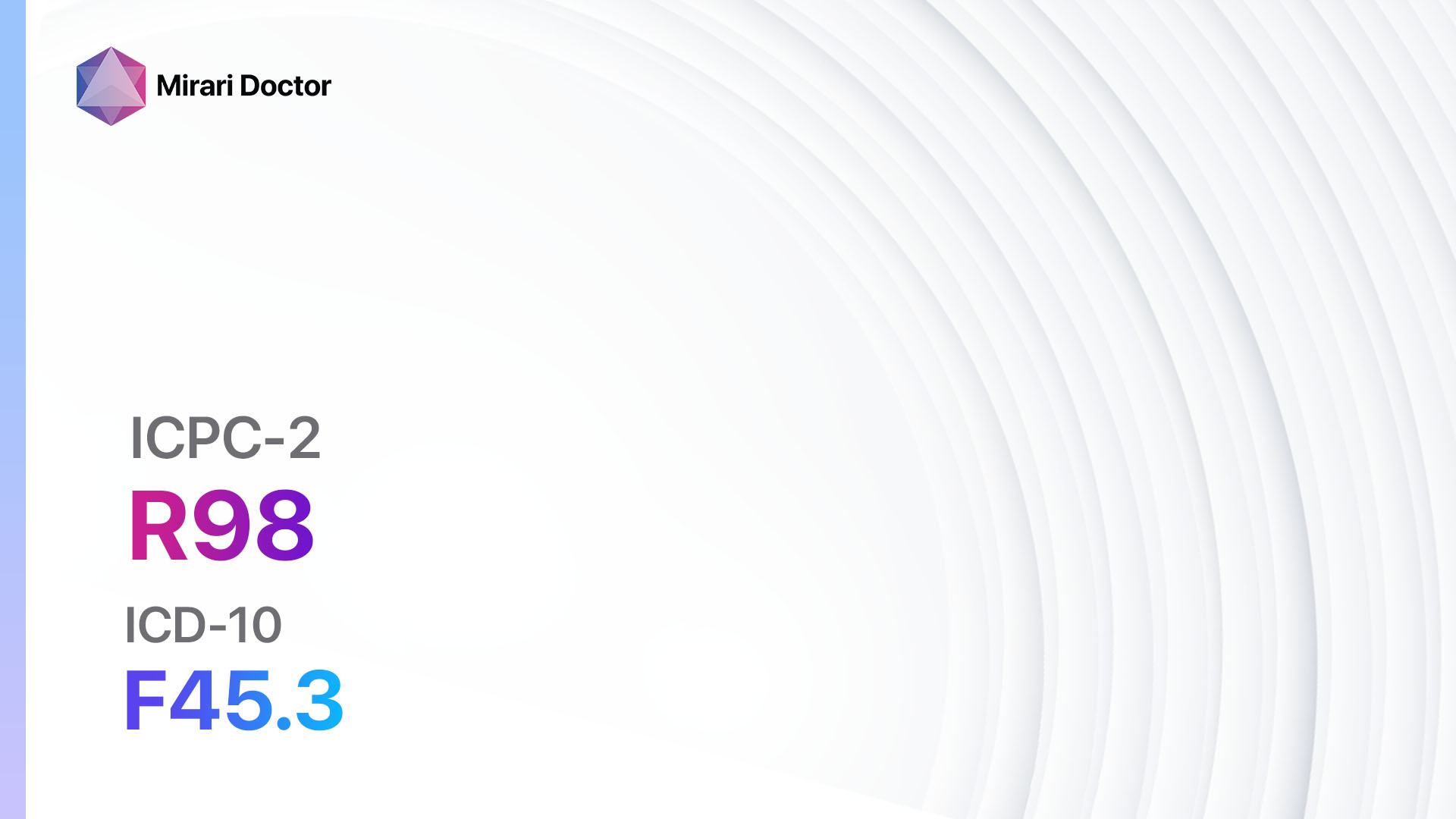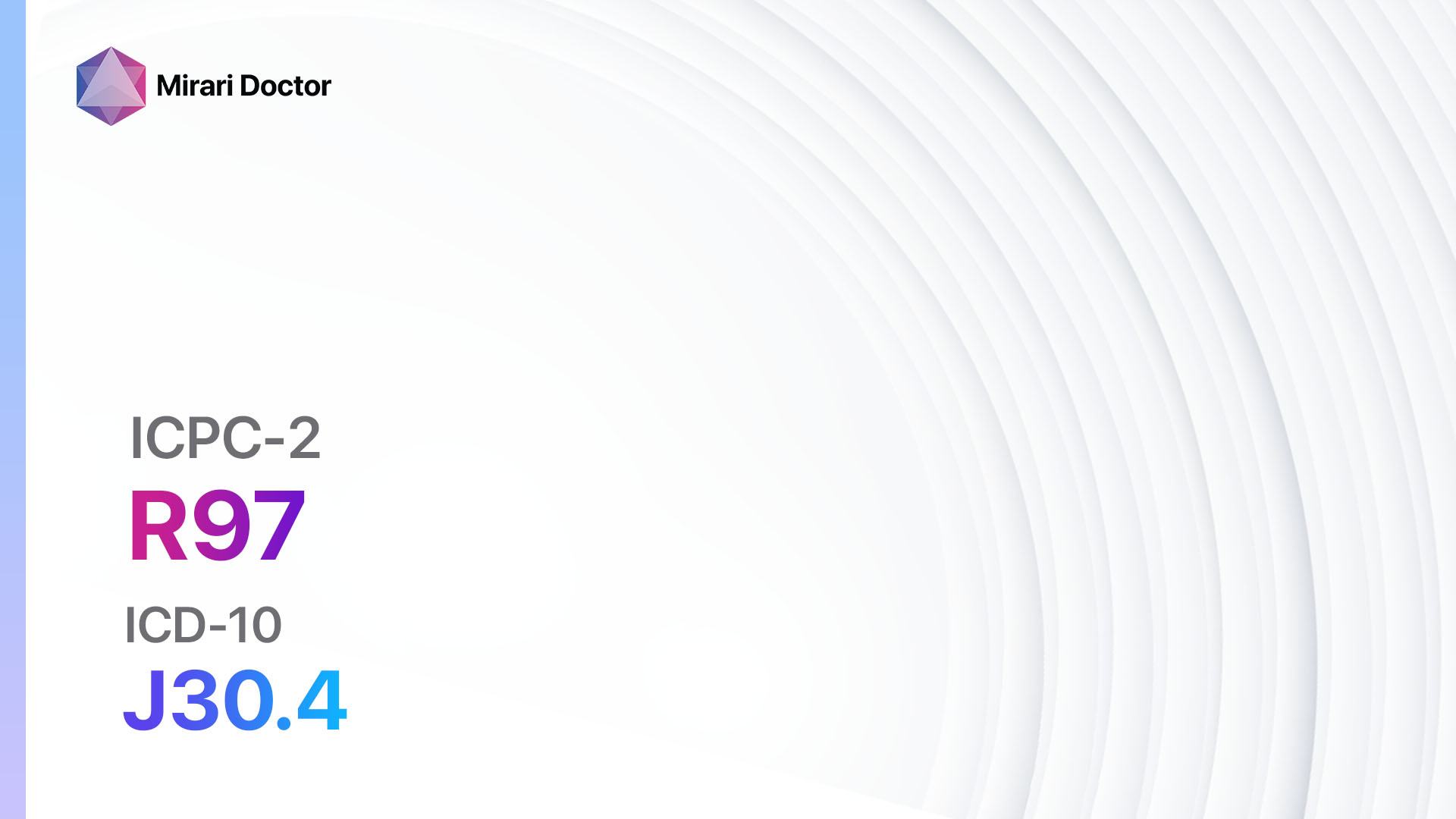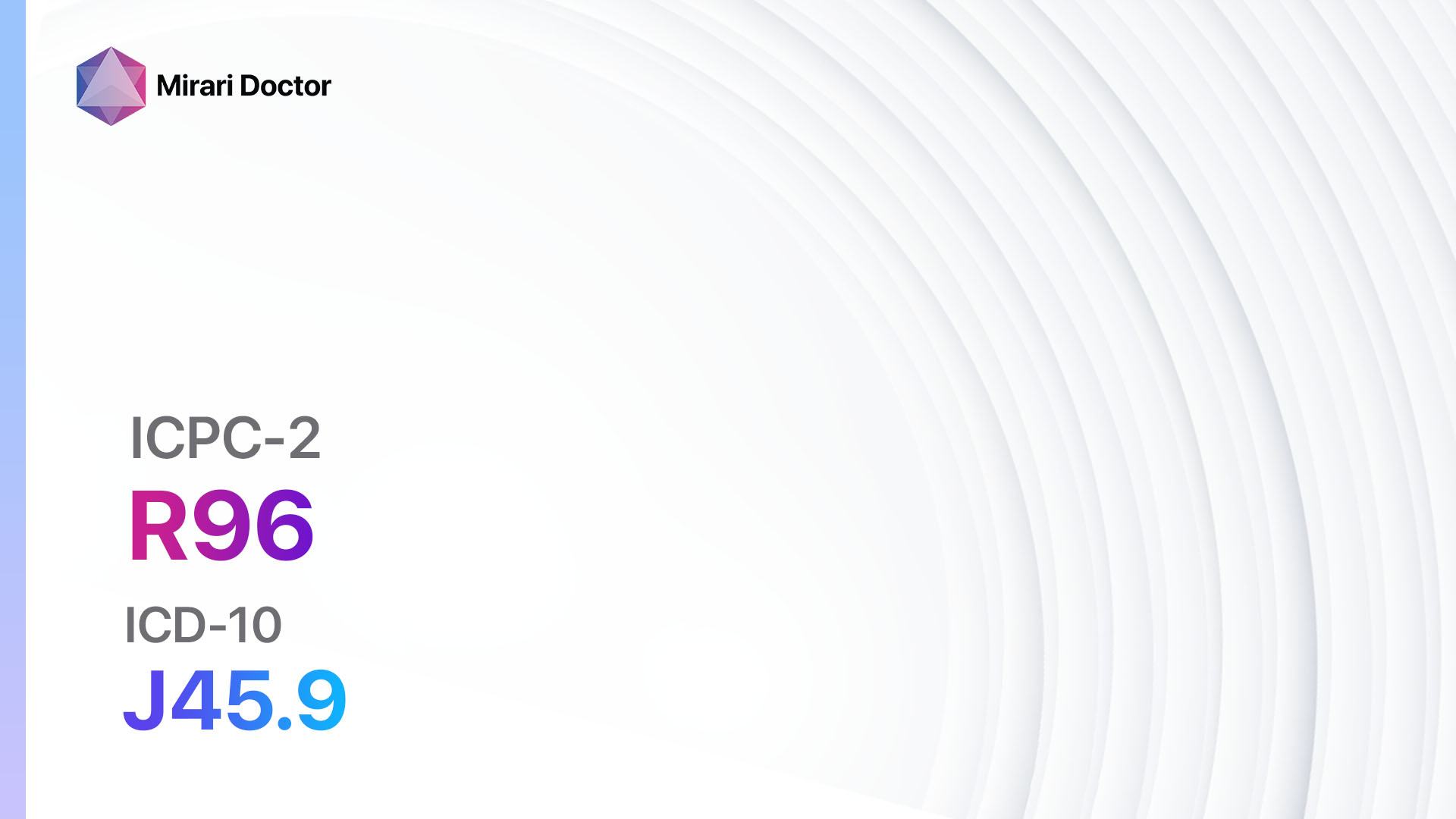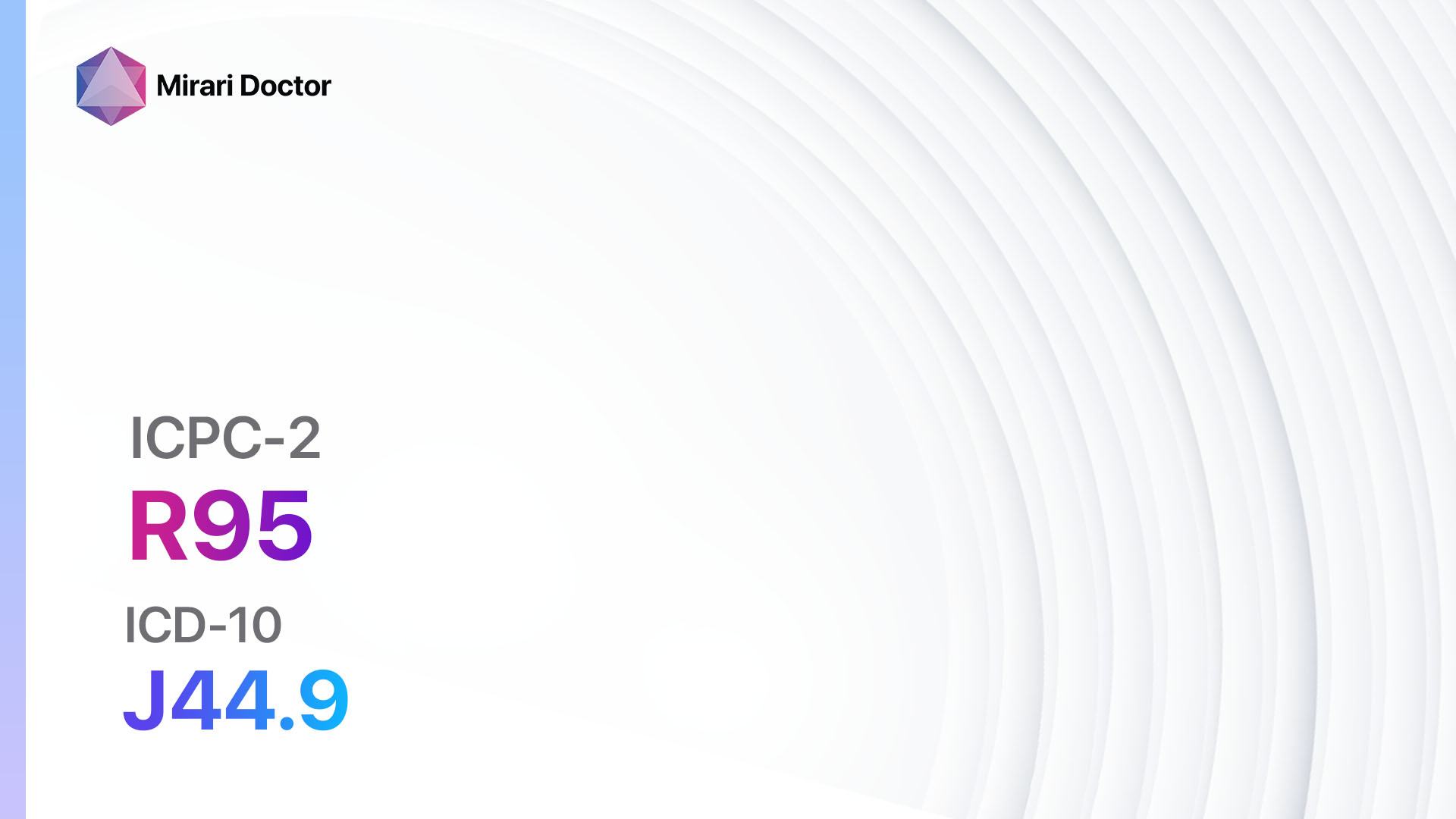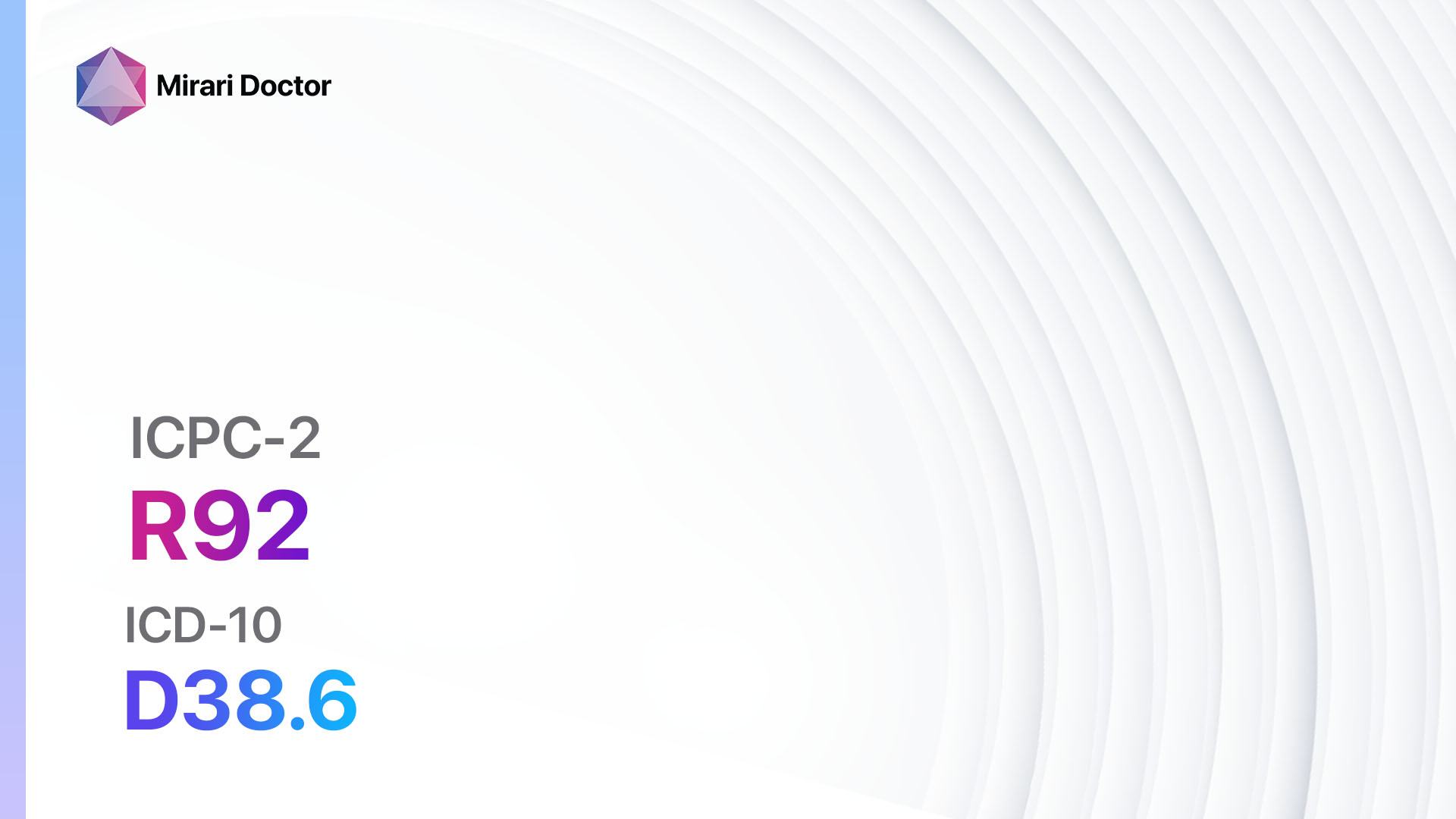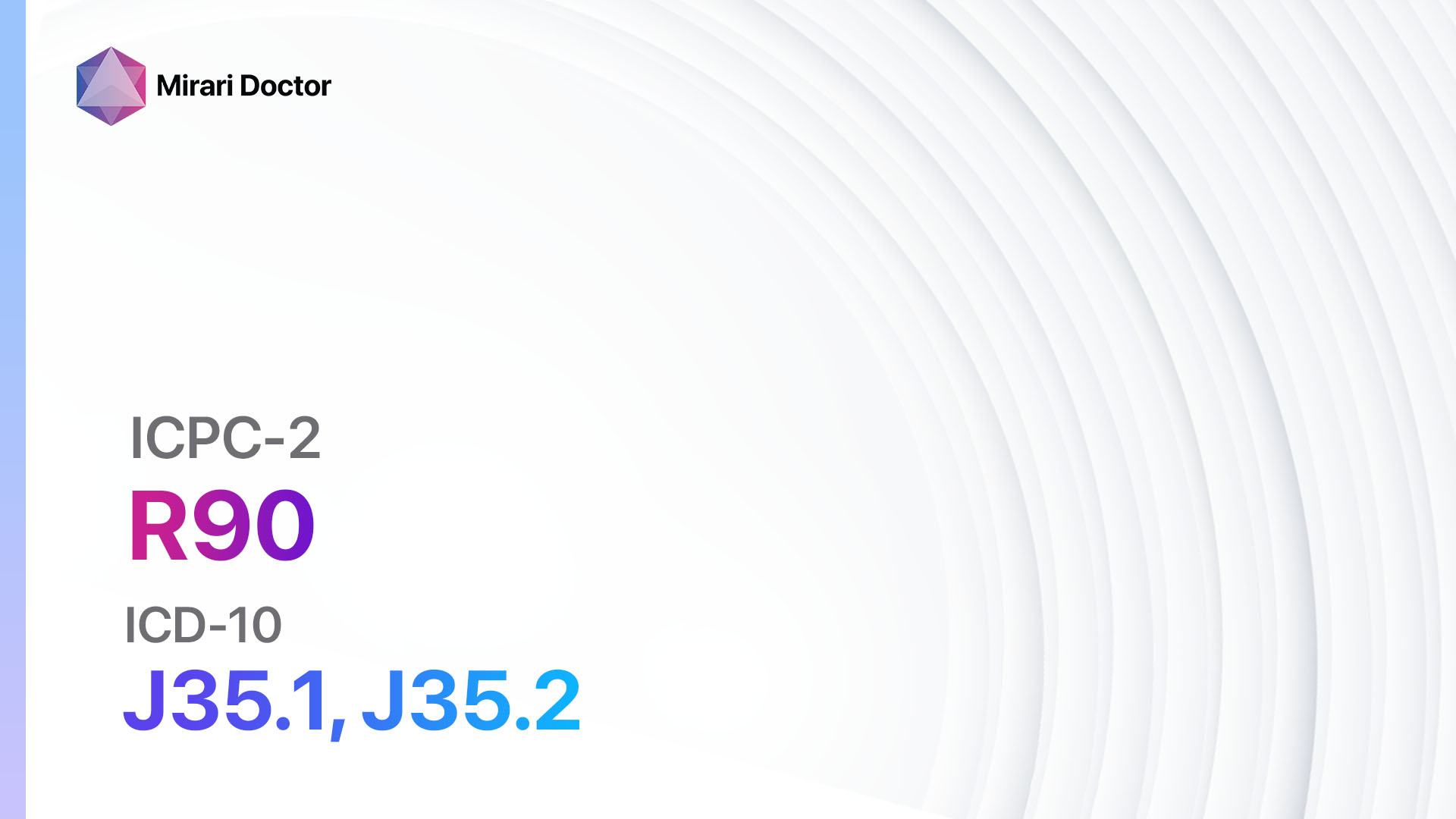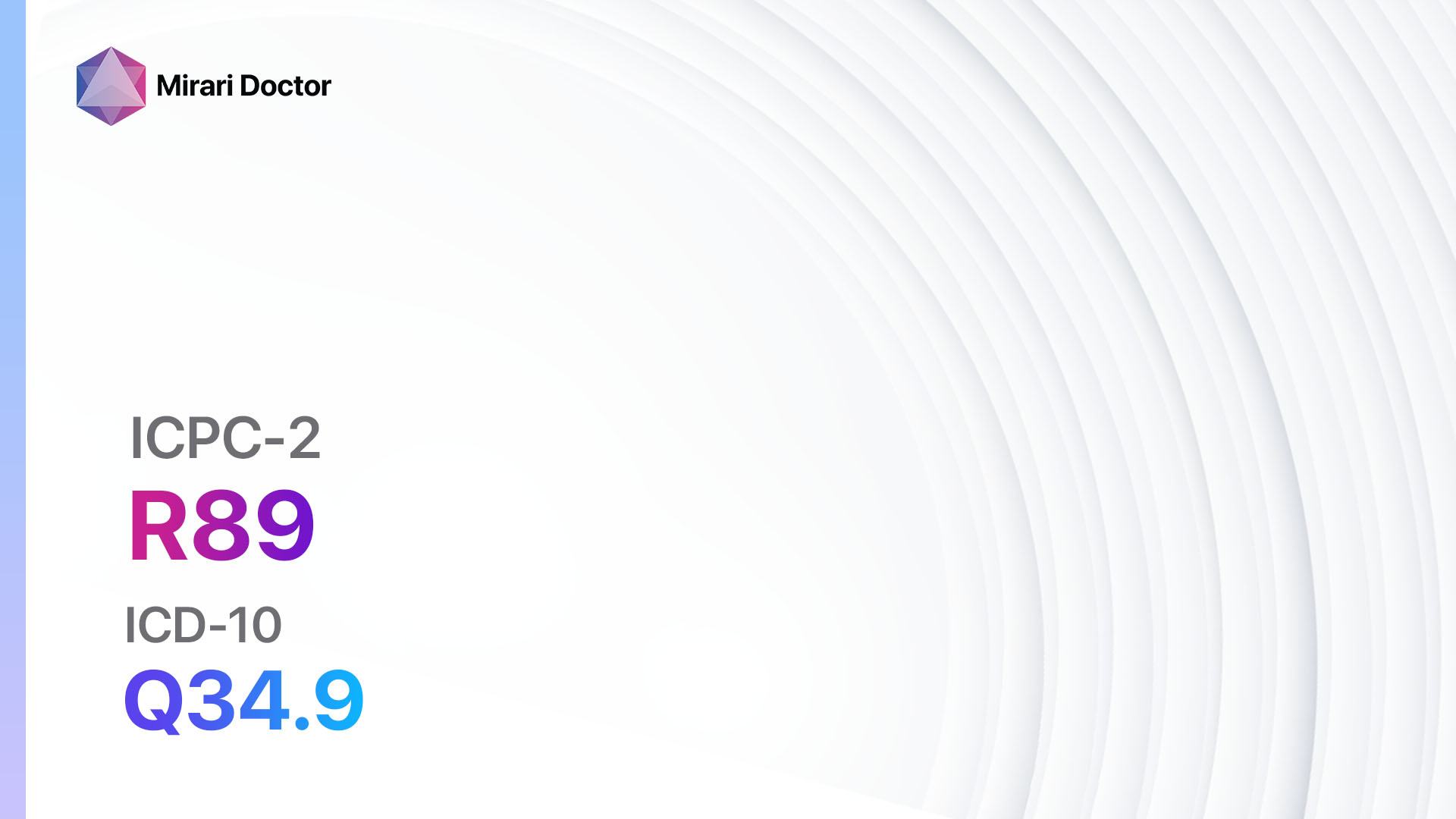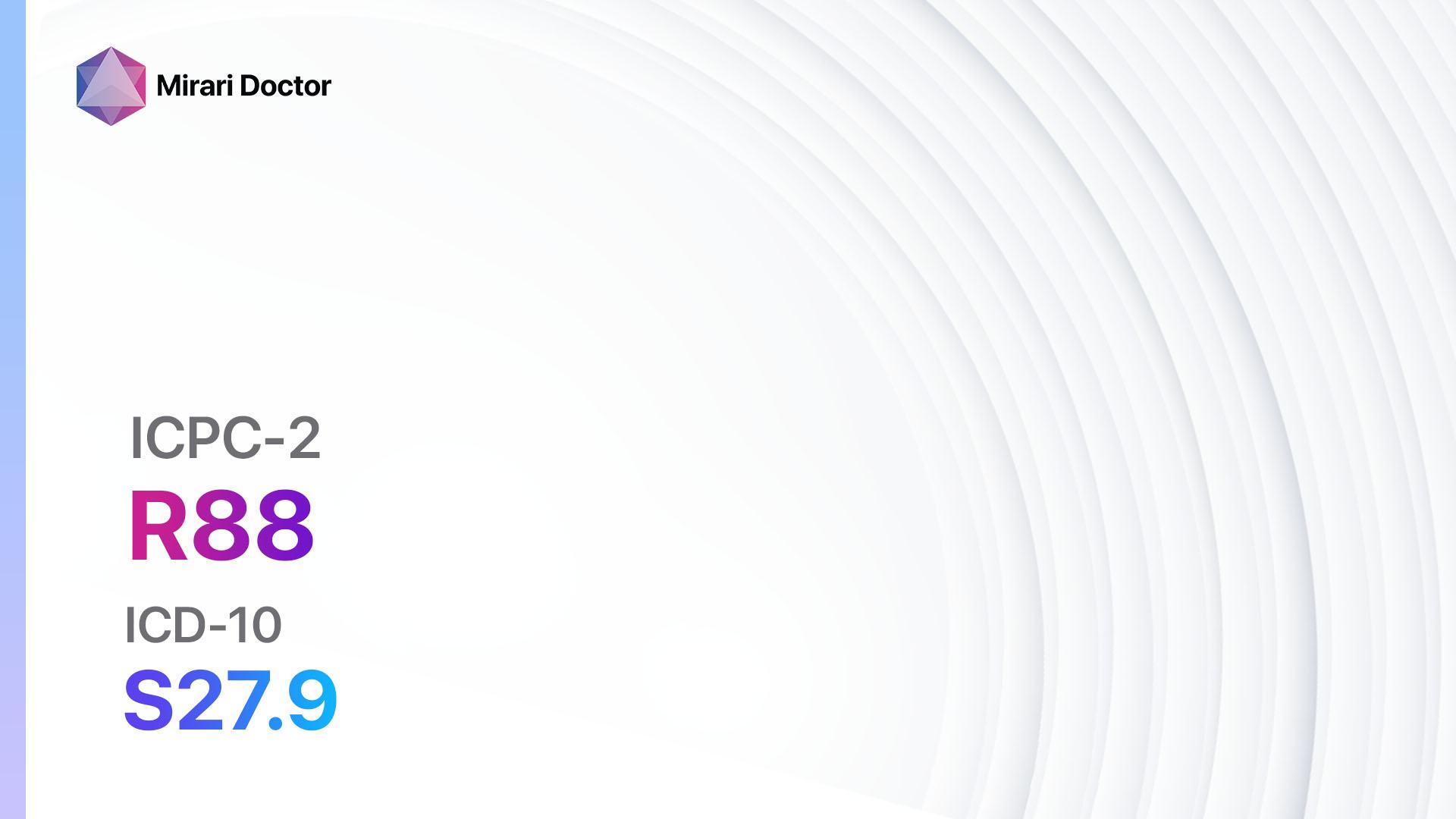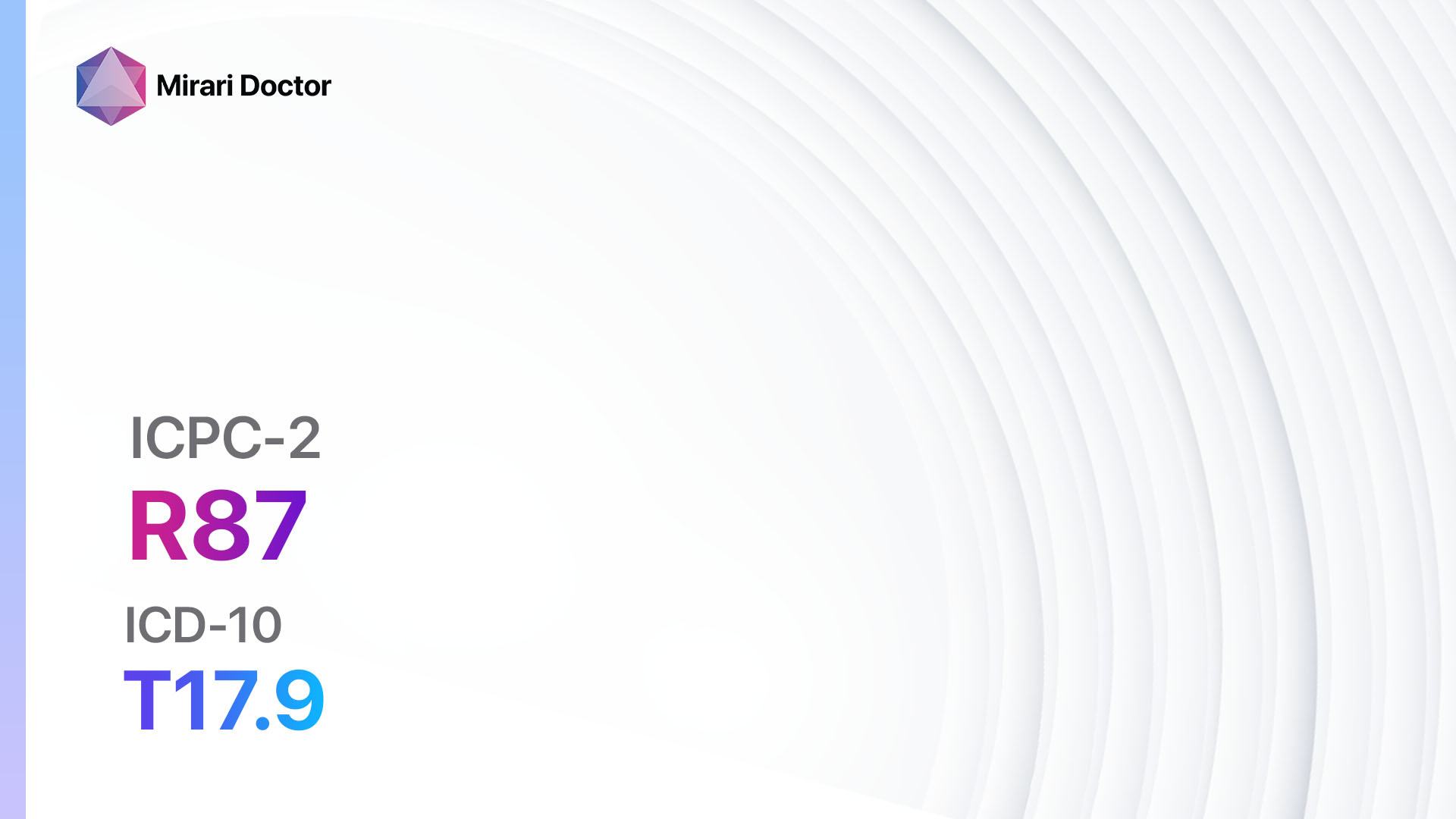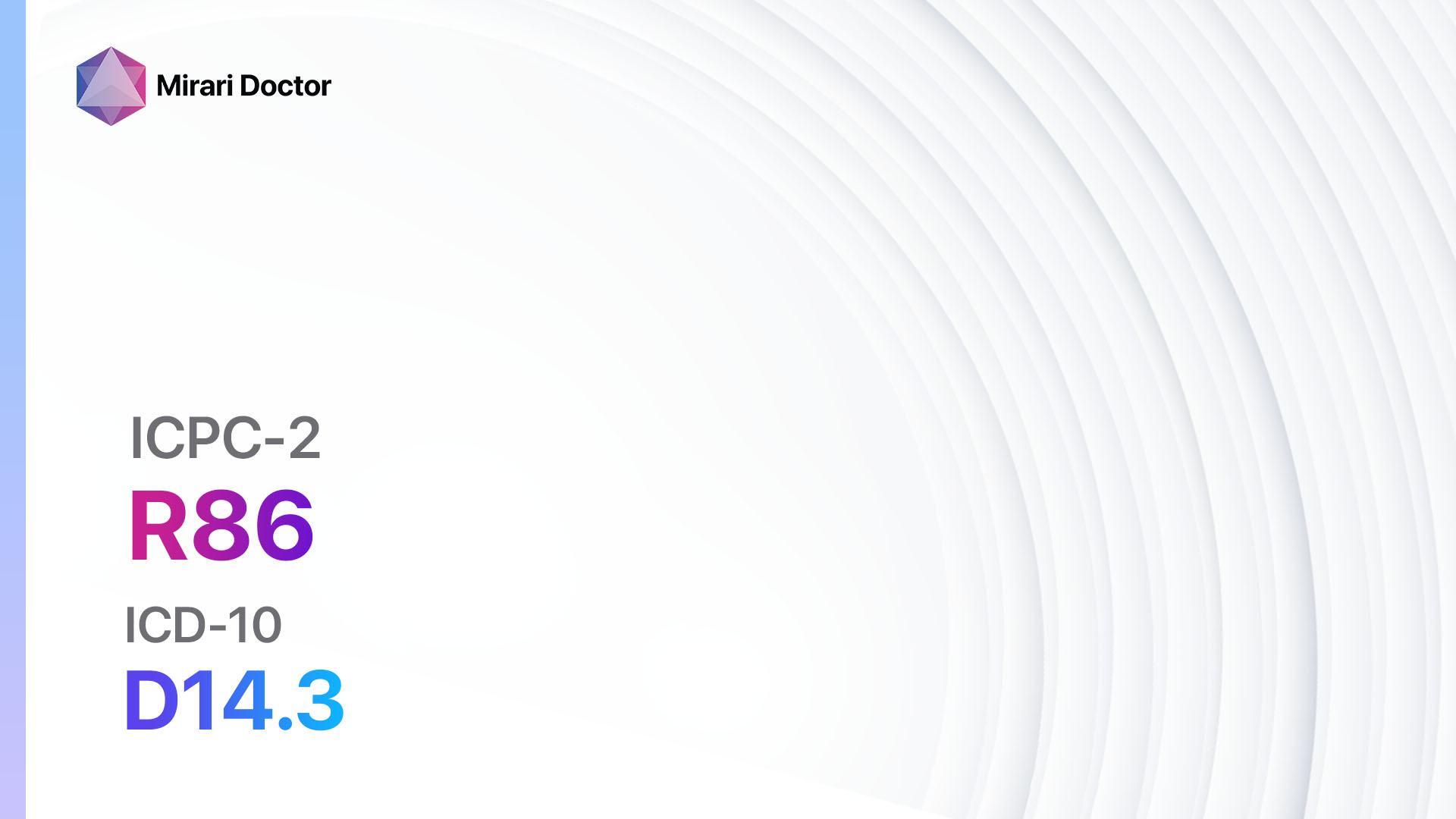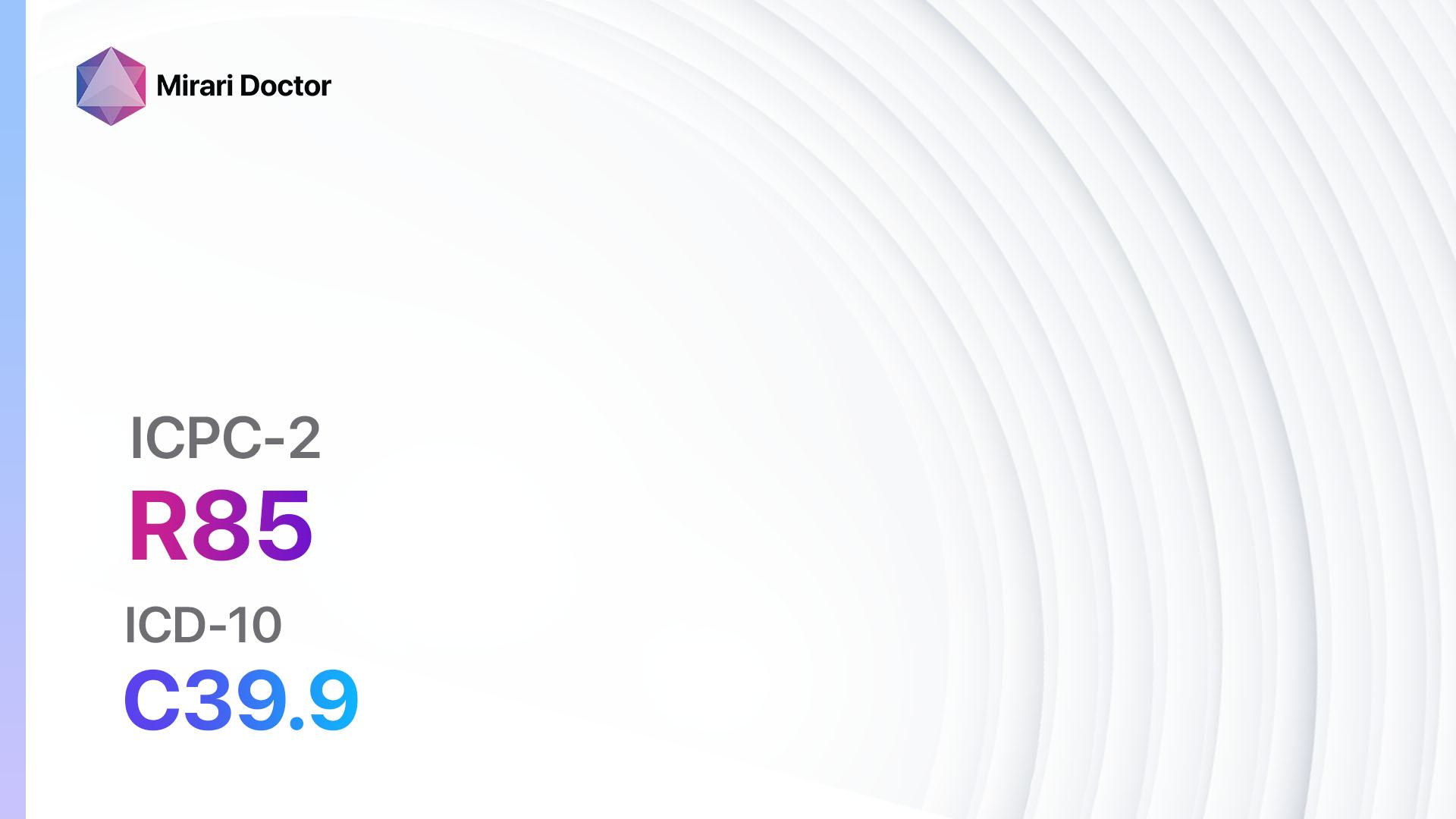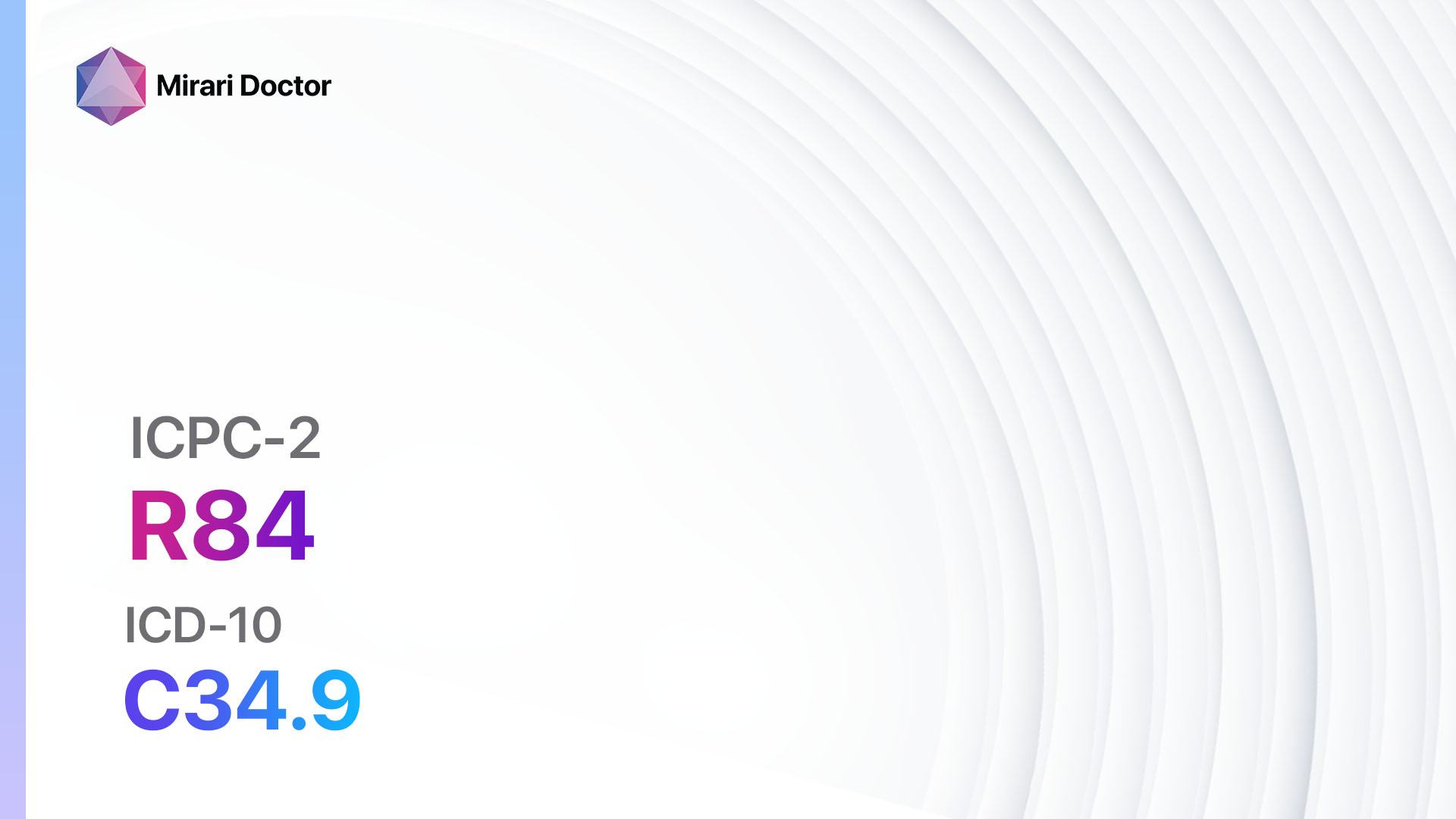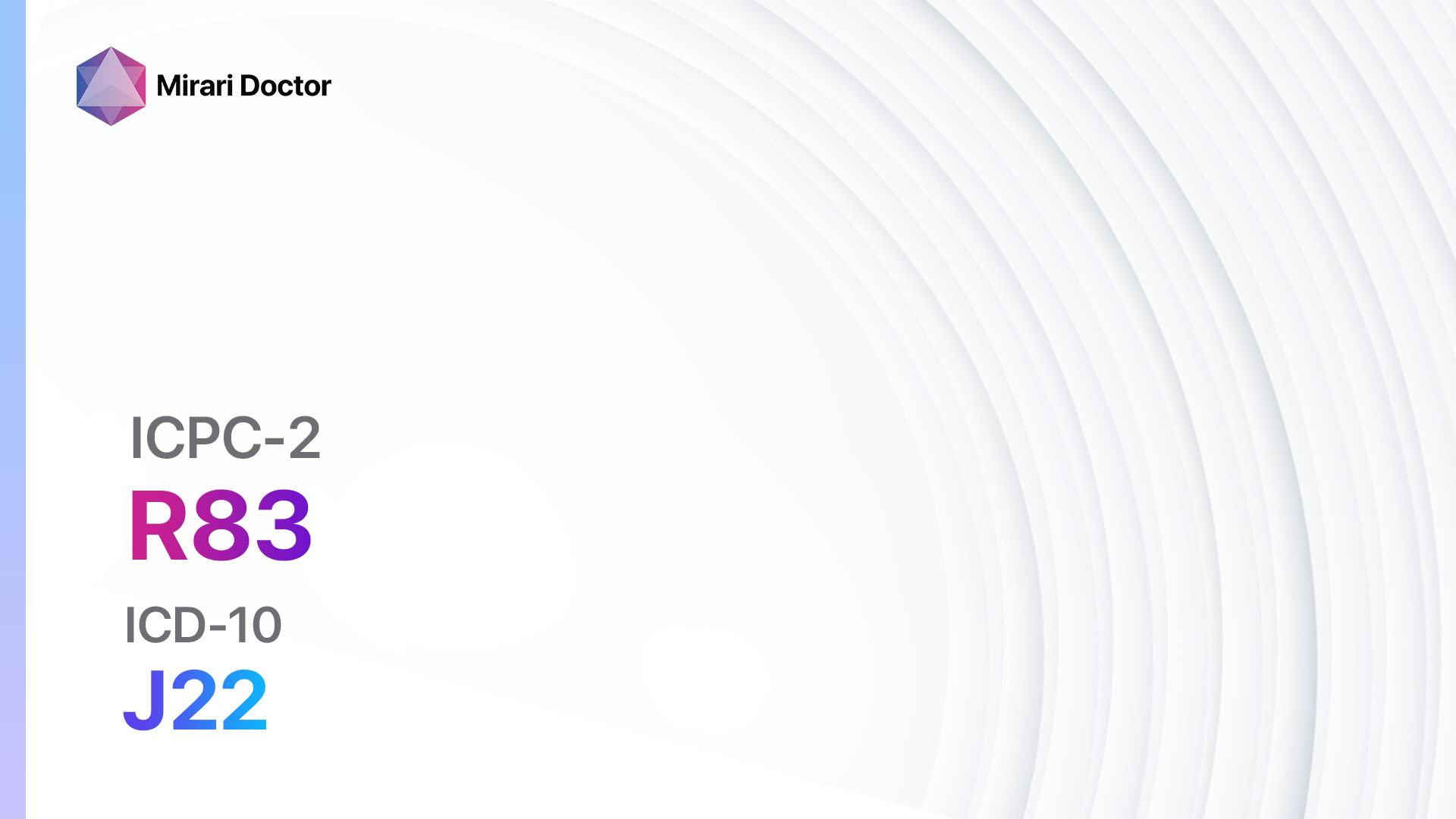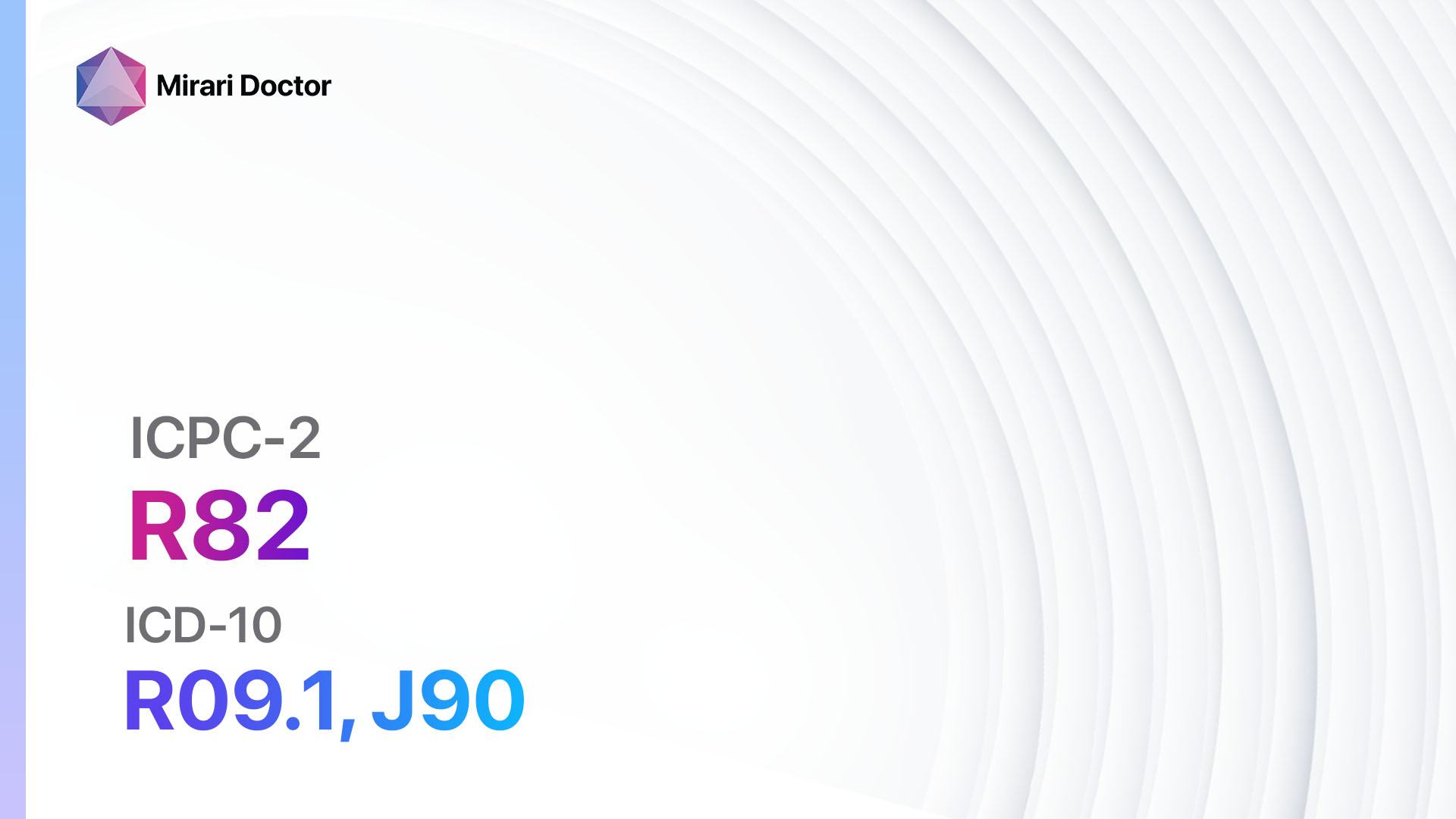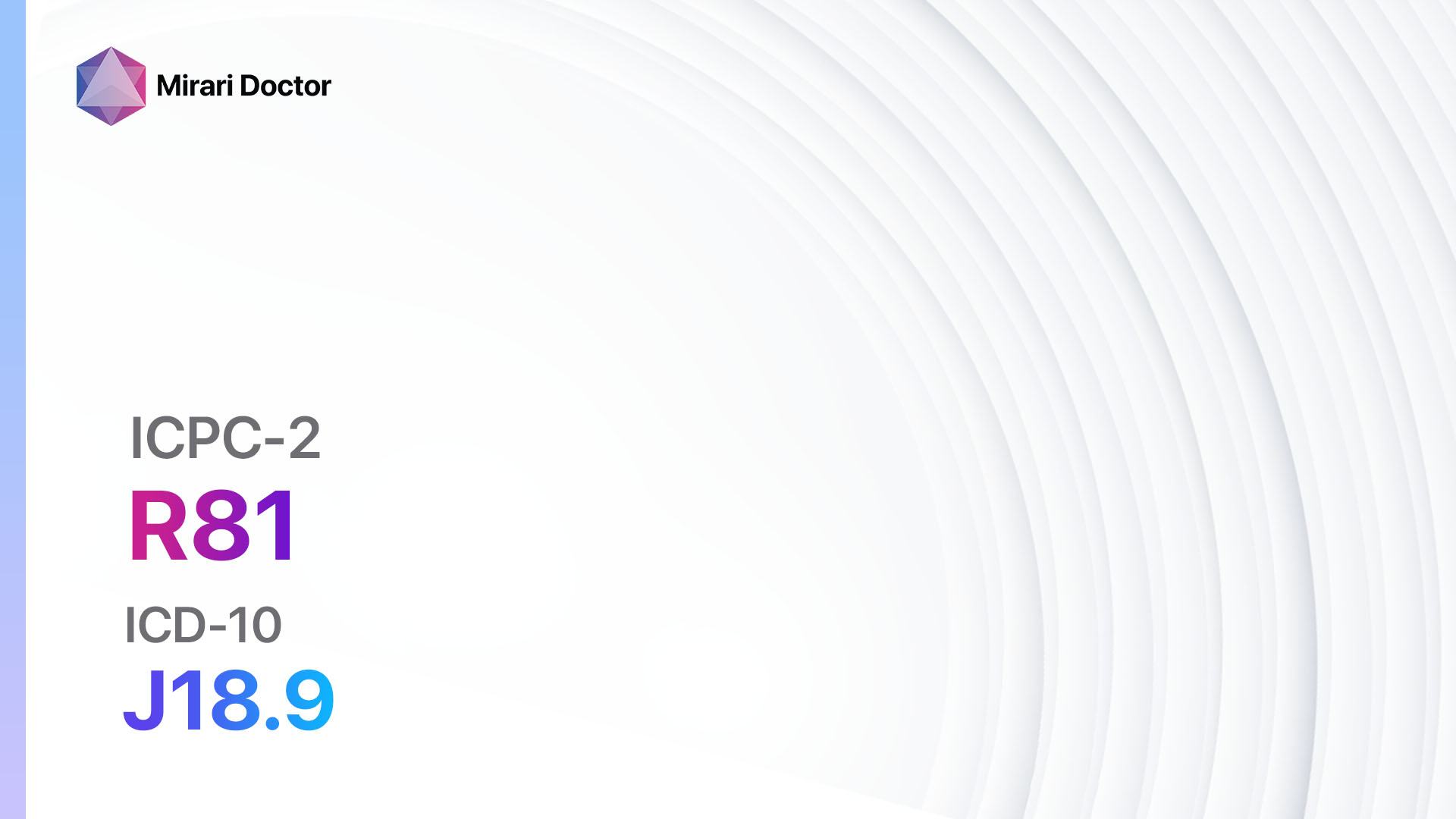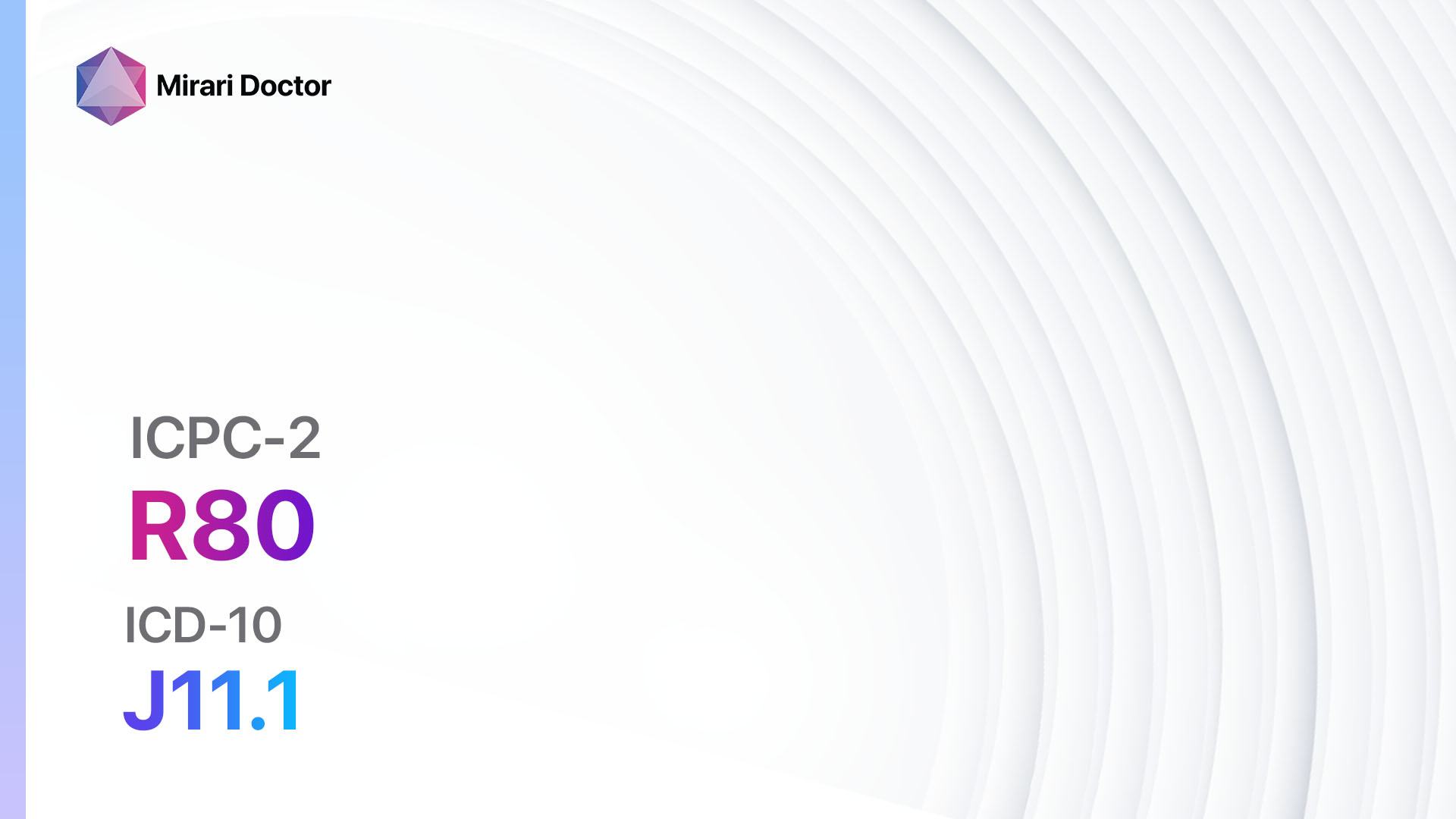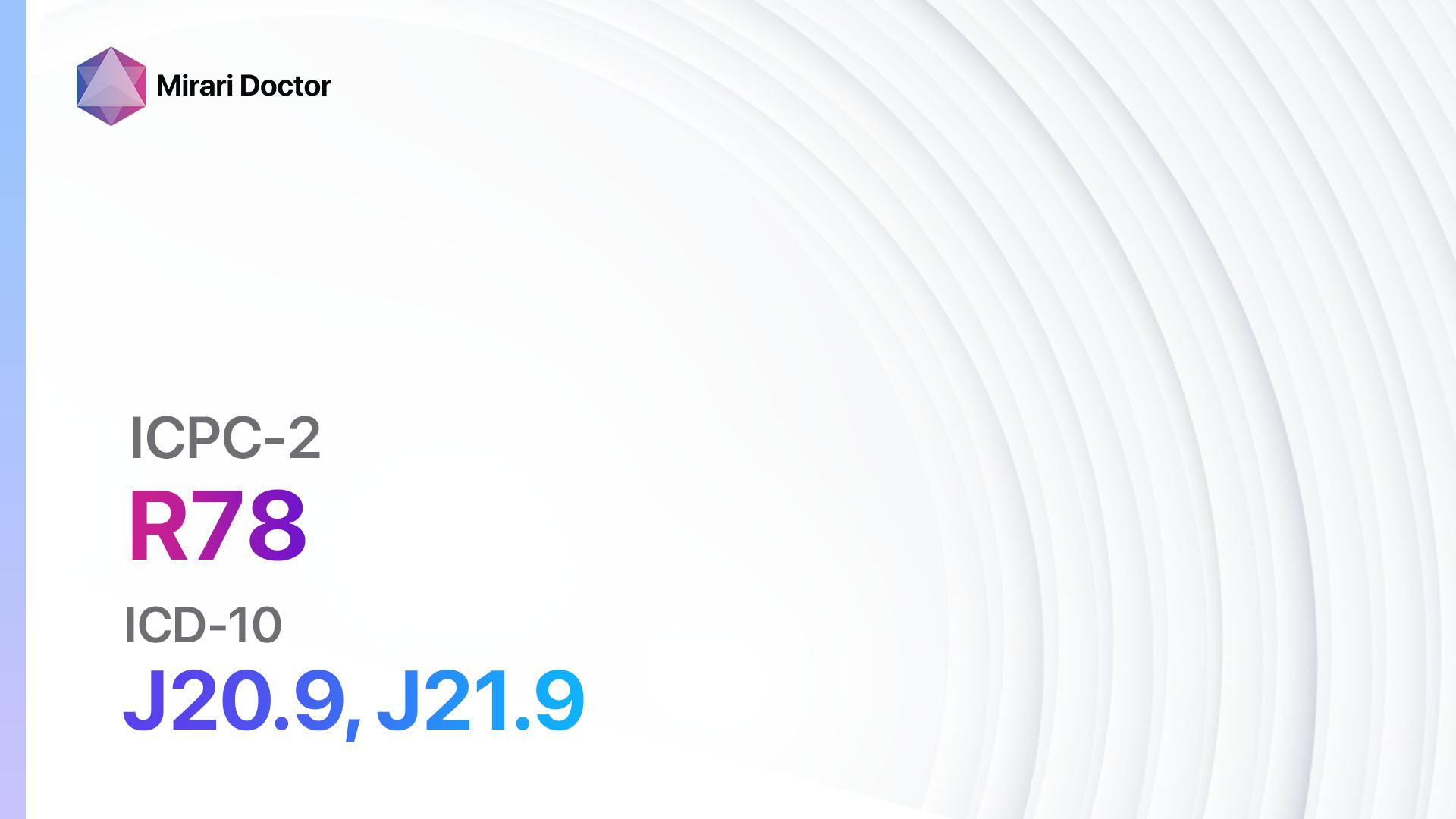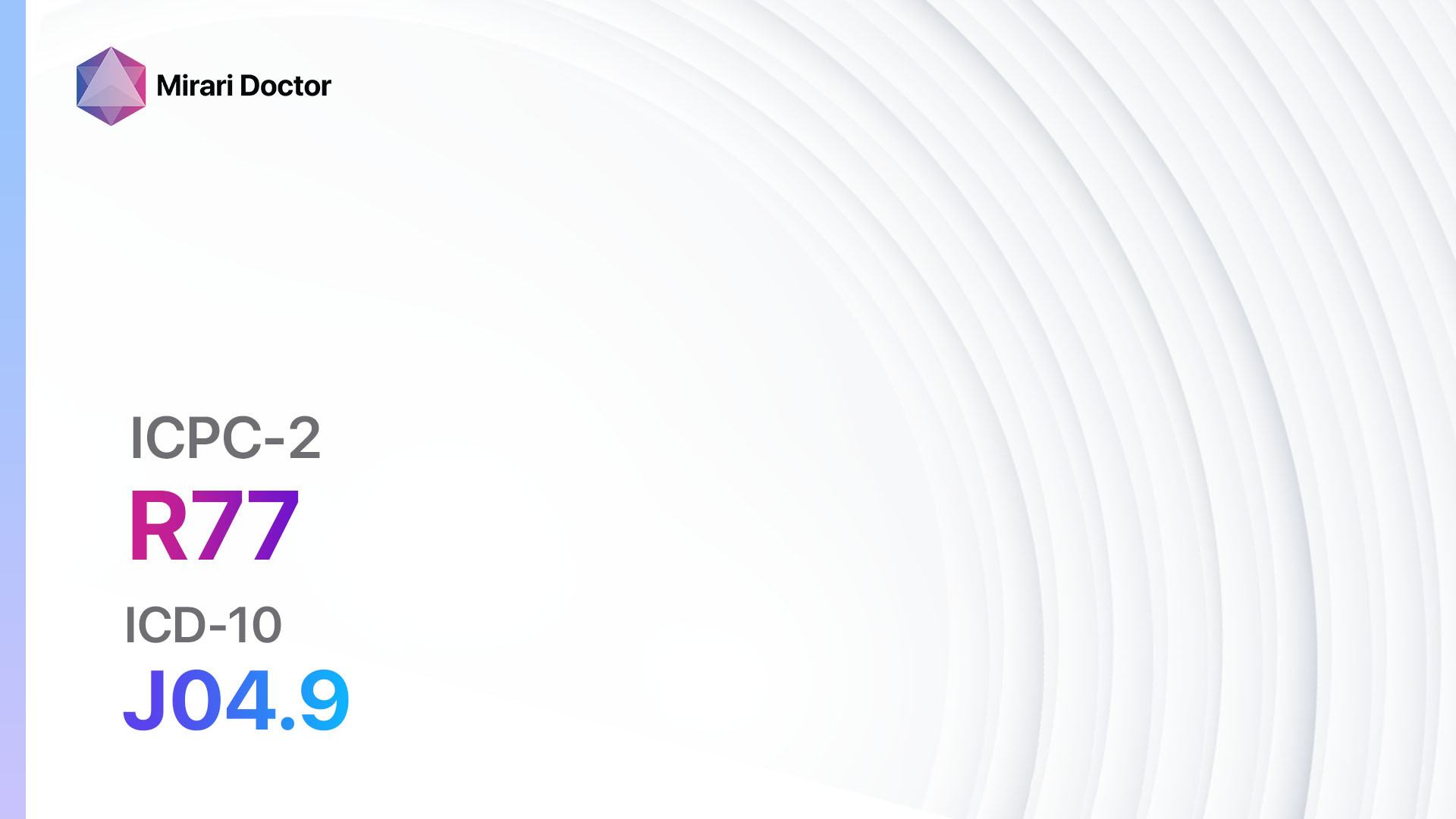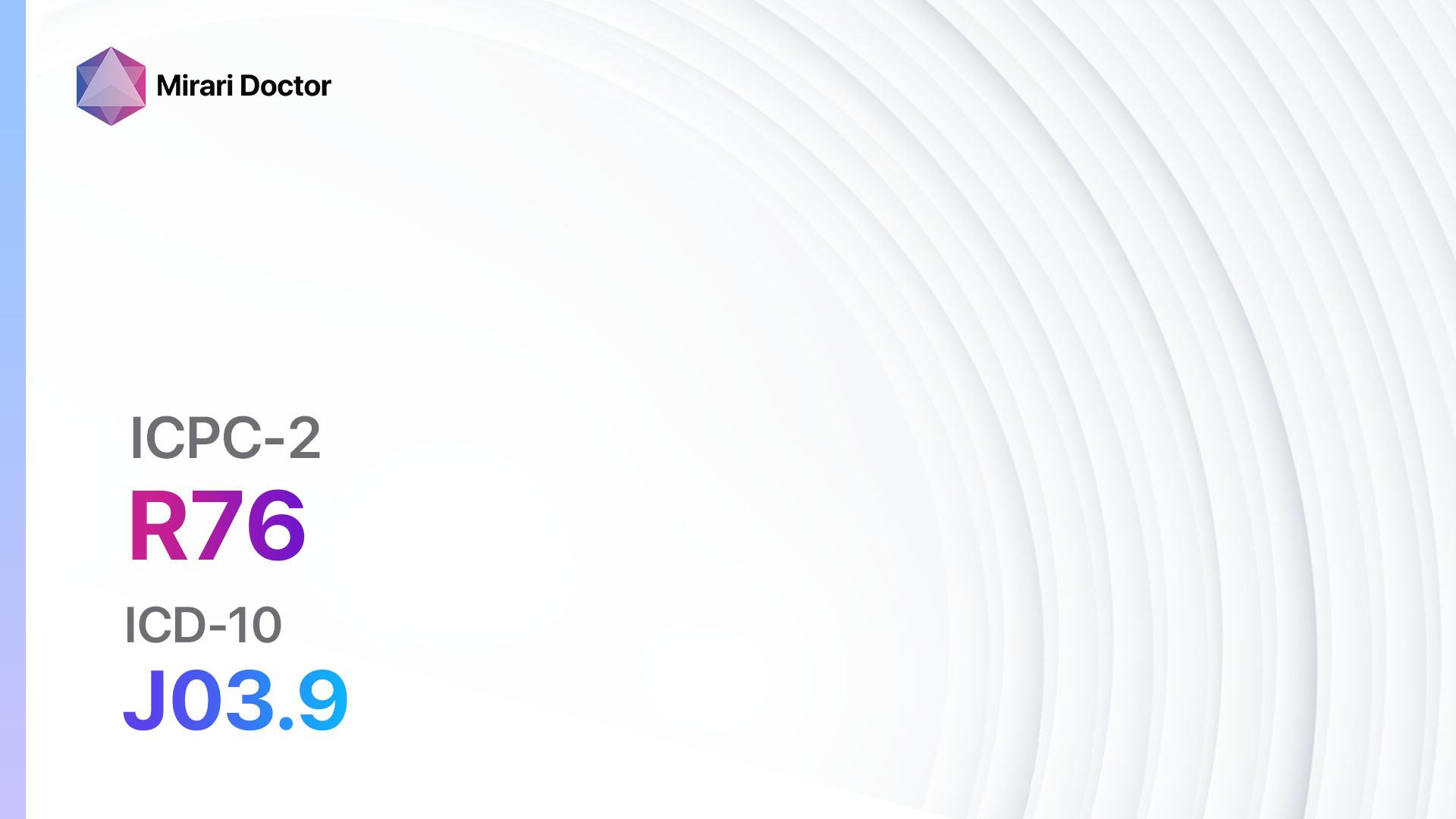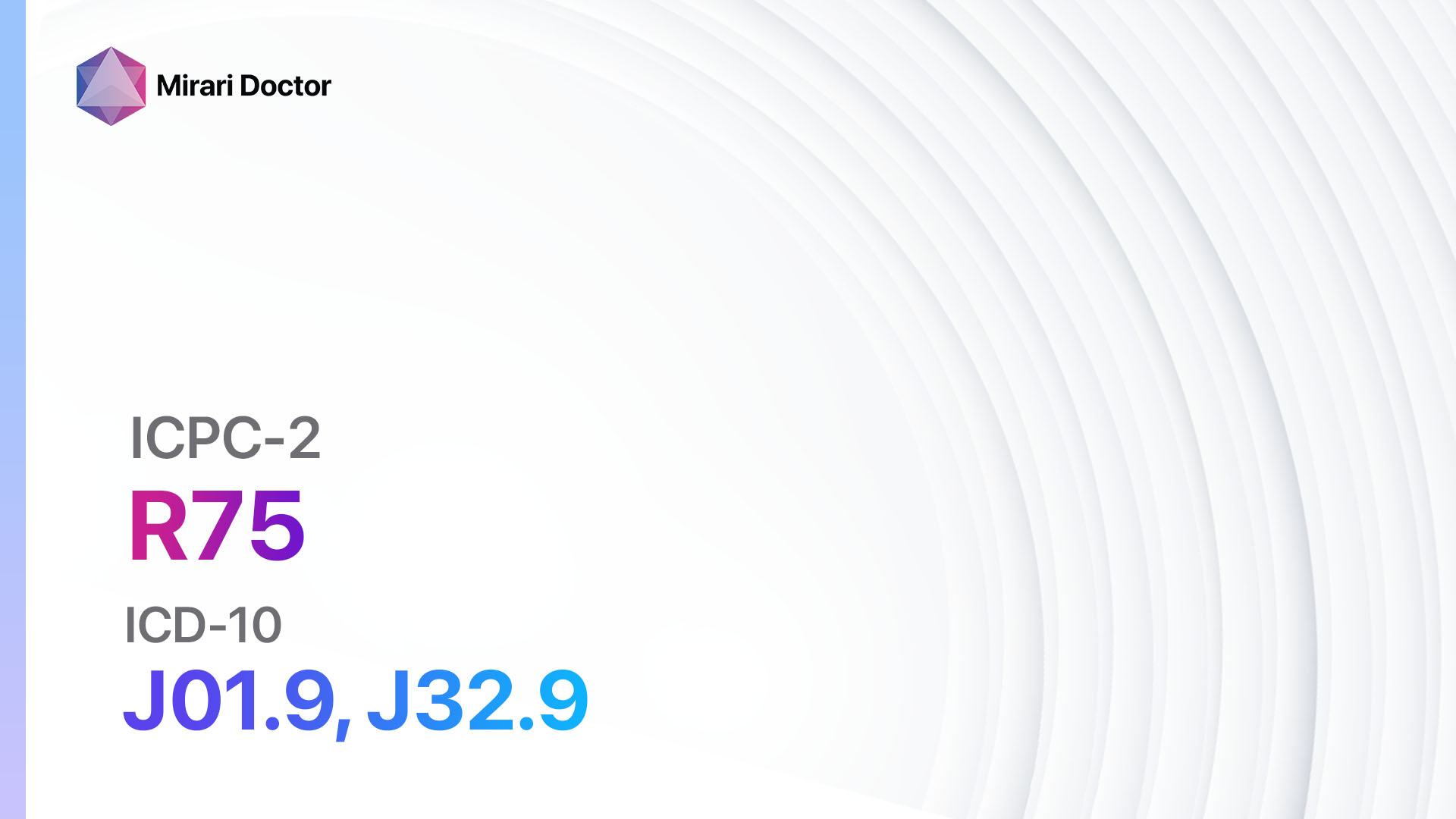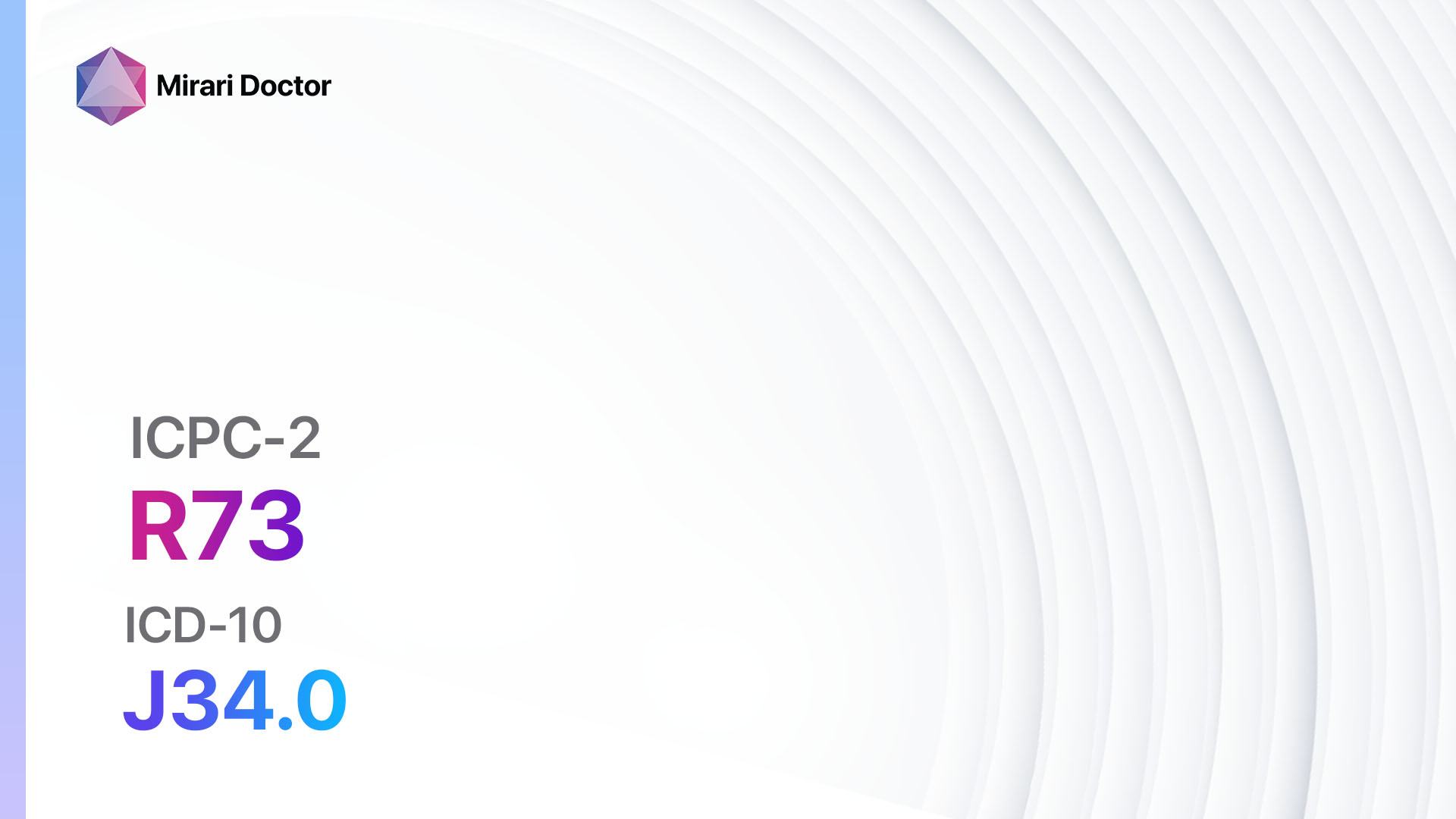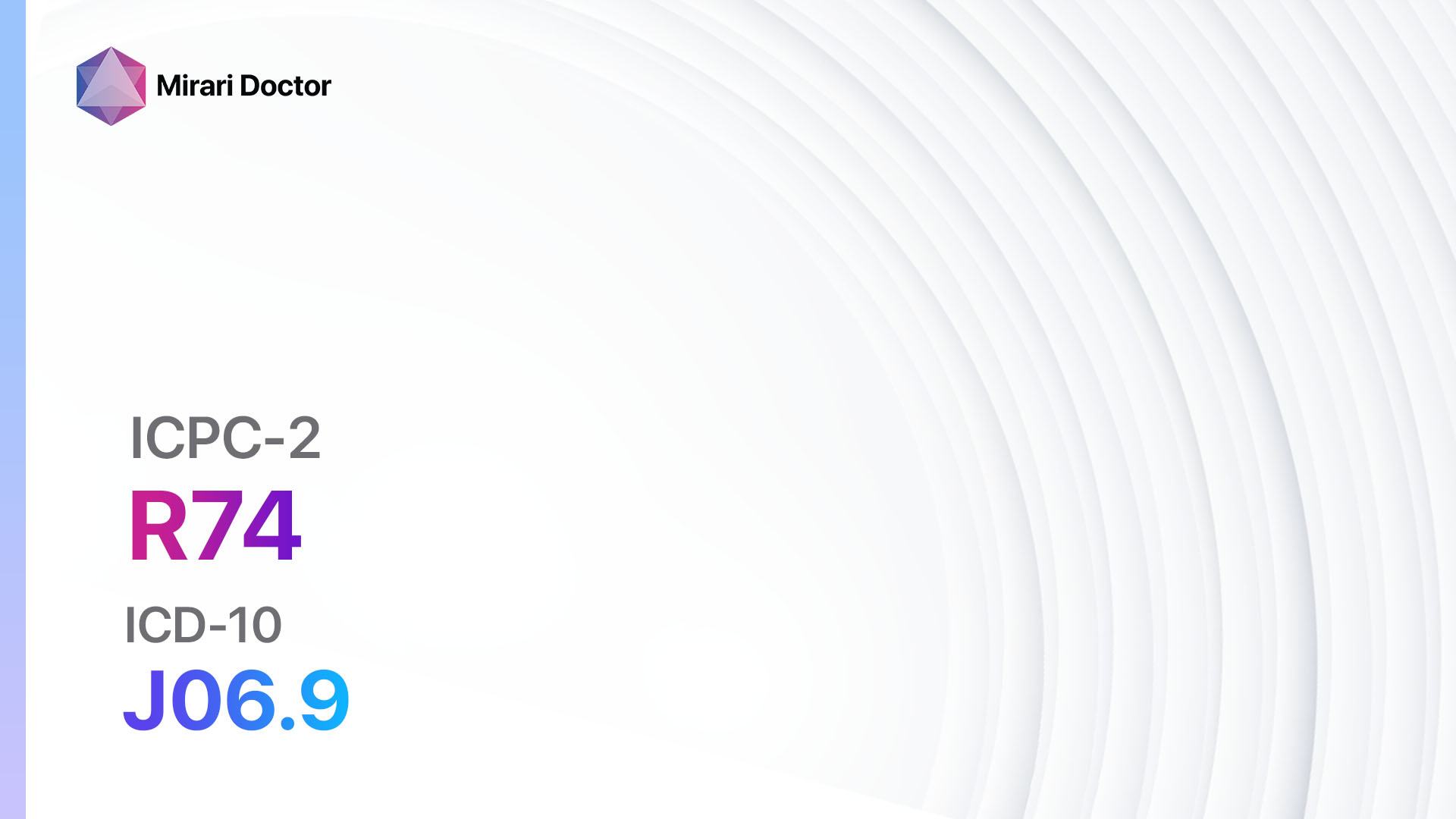
Introduction
Upper respiratory infection acute, also known as the common cold, is a viral infection that affects the nose, throat, and sinuses. It is a highly contagious condition that is spread through respiratory droplets. The aim of this guide is to provide healthcare professionals with a comprehensive overview of the diagnosis and management of acute upper respiratory infections.
Codes
- ICPC-2 Code: R74 Upper respiratory infection acute[1]
- ICD-10 Code: J06.9 Acute upper respiratory infection, unspecified[2]
Symptoms
- Nasal congestion: Blockage or stuffiness in the nasal passages.
- Runny nose: Excessive production of clear nasal discharge.
- Sneezing: Frequent and uncontrollable expulsion of air through the nose and mouth.
- Sore throat: Pain or irritation in the throat.
- Cough: Dry or productive cough.
- Headache: Aching or pain in the head.
- Fatigue: Feeling of tiredness or exhaustion.[3]
Causes
- Viral infection: Acute upper respiratory infections are primarily caused by viruses, including rhinoviruses, coronaviruses, and influenza viruses.
- Bacterial infection: In some cases, a bacterial infection may contribute to the symptoms of an upper respiratory infection.[4]
Diagnostic Steps
Medical History
- Obtain a detailed medical history, including information about the onset and duration of symptoms, exposure to sick individuals, and any underlying medical conditions.
- Ask about specific symptoms, such as nasal congestion, runny nose, sore throat, cough, headache, and fatigue.
- Inquire about any recent travel or exposure to individuals with respiratory infections.[5]
Physical Examination
- Perform a thorough physical examination, including inspection of the nasal passages, throat, and ears.
- Look for signs of nasal congestion, redness or swelling of the throat, and enlarged lymph nodes.
- Listen to the lungs for any abnormal breath sounds.[6]
Laboratory Tests
- In most cases, laboratory tests are not necessary for the diagnosis of acute upper respiratory infections.
- However, in certain situations, such as severe or prolonged symptoms, a throat swab or nasal swab may be performed to identify the specific viral or bacterial pathogen.[7]
Diagnostic Imaging
- Diagnostic imaging is not typically required for the diagnosis of acute upper respiratory infections.
- However, in rare cases, a chest X-ray may be ordered if there are concerns about complications, such as pneumonia.[8]
Other Tests
- Other diagnostic tests, such as blood tests or specialized assays, are not routinely performed for the diagnosis of acute upper respiratory infections.[9]
Follow-up and Patient Education
- Advise the patient to rest, drink plenty of fluids, and take over-the-counter medications to relieve symptoms.
- Educate the patient about the importance of hand hygiene and respiratory etiquette to prevent the spread of the infection.
- Instruct the patient to seek medical attention if symptoms worsen or if they develop severe complications, such as difficulty breathing or high fever.[10]
Possible Interventions
Traditional Interventions
Medications:
Top 5 drugs for Upper respiratory infection acute:
- Acetaminophen:
- Cost: $3-$10 for a bottle of generic acetaminophen.
- Contraindications: Hypersensitivity to acetaminophen.
- Side effects: Rare, but may include allergic reactions or liver damage with high doses.
- Severe side effects: Liver failure with overdose.
- Drug interactions: Alcohol, warfarin, and certain antibiotics.
- Warning: Do not exceed the recommended dosage to avoid liver damage.
- Nonsteroidal anti-inflammatory drugs (NSAIDs) (e.g., ibuprofen, naproxen):
- Cost: $3-$10 for a bottle of generic NSAIDs.
- Contraindications: Active peptic ulcer disease, history of gastrointestinal bleeding, or hypersensitivity to NSAIDs.
- Side effects: Upset stomach, heartburn, or stomach ulcers with long-term use.
- Severe side effects: Gastrointestinal bleeding, kidney problems, or allergic reactions.
- Drug interactions: Anticoagulants, aspirin, and certain blood pressure medications.
- Warning: NSAIDs should be taken with food to reduce the risk of stomach upset.
- Decongestants (e.g., pseudoephedrine, phenylephrine):
- Cost: $5-$15 for a box of generic decongestant tablets.
- Contraindications: Severe hypertension, coronary artery disease, or hyperthyroidism.
- Side effects: Increased heart rate, elevated blood pressure, or insomnia.
- Severe side effects: Severe hypertension or heart rhythm disturbances.
- Drug interactions: Monoamine oxidase inhibitors (MAOIs), certain antidepressants, or blood pressure medications.
- Warning: Pseudoephedrine is a controlled substance and may require identification for purchase.
- Cough suppressants (e.g., dextromethorphan):
- Cost: $5-$15 for a bottle of generic cough syrup.
- Contraindications: Hypersensitivity to dextromethorphan or concurrent use of monoamine oxidase inhibitors (MAOIs).
- Side effects: Drowsiness, dizziness, or upset stomach.
- Severe side effects: Rare, but may include allergic reactions or serotonin syndrome.
- Drug interactions: MAOIs, certain antidepressants, or medications that increase serotonin levels.
- Warning: Do not use in children under 4 years of age.
- Antihistamines (e.g., loratadine, cetirizine):
- Cost: $5-$15 for a box of generic antihistamine tablets.
- Contraindications: Hypersensitivity to antihistamines or concurrent use of certain medications.
- Side effects: Drowsiness, dry mouth, or blurred vision.
- Severe side effects: Rare, but may include allergic reactions or increased heart rate.
- Drug interactions: Sedatives, tranquilizers, or certain antidepressants.
- Warning: Some antihistamines may cause drowsiness, so caution should be exercised when driving or operating machinery.
Alternative Drugs:
- Echinacea: An herbal supplement that may help boost the immune system. Cost: $10-$20 for a bottle of echinacea capsules.
- Zinc lozenges: May help reduce the duration and severity of cold symptoms. Cost: $5-$10 for a box of zinc lozenges.
- Vitamin C: Some studies suggest that high-dose vitamin C may shorten the duration of cold symptoms. Cost: $5-$15 for a bottle of vitamin C tablets.
- Honey: Can be used as a natural cough suppressant. Cost: $5-$10 for a jar of honey.
- Saline nasal sprays: Help relieve nasal congestion and moisturize the nasal passages. Cost: $5-$10 for a bottle of saline nasal spray.
Surgical Procedures:
- Surgical procedures are not indicated for the treatment of acute upper respiratory infections.
Alternative Interventions
- Steam inhalation: Inhaling steam from a bowl of hot water may help relieve nasal congestion. Cost: Free.
- Nasal irrigation: Flushing the nasal passages with a saline solution can help clear mucus and reduce congestion. Cost: $10-$20 for a nasal irrigation kit.
- Herbal teas: Some herbal teas, such as chamomile or peppermint, may help soothe sore throat and relieve congestion. Cost: $5-$10 for a box of herbal tea bags.
- Warm saltwater gargle: Gargling with warm saltwater can help alleviate sore throat. Cost: Free.
- Rest and hydration: Adequate rest and hydration are essential for the body to fight off the infection. Cost: Free.
Lifestyle Interventions
- Proper hand hygiene: Regular handwashing with soap and water or using hand sanitizers can help prevent the spread of the infection. Cost: Free.
- Covering mouth and nose: Encourage patients to cover their mouth and nose with a tissue or their elbow when coughing or sneezing to prevent the spread of respiratory droplets. Cost: Free.
- Avoiding close contact: Advise patients to avoid close contact with individuals who have respiratory infections to reduce the risk of transmission. Cost: Free.
- Humidifier use: Using a humidifier can help moisturize the air and alleviate nasal congestion. Cost: $20-$50 for a basic humidifier.
- Elevating the head: Sleeping with the head elevated can help reduce nasal congestion and promote better breathing. Cost: Free.
It is important to note that the cost ranges provided are approximate and may vary depending on the location and availability of the interventions.
Mirari Cold Plasma Alternative Intervention
Understanding Mirari Cold Plasma
- Safe and Non-Invasive Treatment: Mirari Cold Plasma is a safe and non-invasive treatment option for various skin conditions. It does not require incisions, minimizing the risk of scarring, bleeding, or tissue damage.
- Efficient Extraction of Foreign Bodies: Mirari Cold Plasma facilitates the removal of foreign bodies from the skin by degrading and dissociating organic matter, allowing easier access and extraction.
- Pain Reduction and Comfort: Mirari Cold Plasma has a local analgesic effect, providing pain relief during the treatment, making it more comfortable for the patient.
- Reduced Risk of Infection: Mirari Cold Plasma has antimicrobial properties, effectively killing bacteria and reducing the risk of infection.
- Accelerated Healing and Minimal Scarring: Mirari Cold Plasma stimulates wound healing and tissue regeneration, reducing healing time and minimizing the formation of scars.
Mirari Cold Plasma Prescription
Video instructions for using Mirari Cold Plasma Device – R74 Upper respiratory infection acute (ICD-10:J06.9)
| Mild | Moderate | Severe |
| Mode setting: 1 (Infection) Location: 0 (Localized) Morning: 15 minutes, Evening: 15 minutes |
Mode setting: 1 (Infection) Location: 0 (Localized) Morning: 30 minutes, Lunch: 30 minutes, Evening: 30 minutes |
Mode setting: 1 (Infection) Location: 0 (Localized) Morning: 30 minutes, Lunch: 30 minutes, Evening: 30 minutes |
| Mode setting: 3 (Antiviral Therapy) Location: 0 (Localized) Morning: 15 minutes, Evening: 15 minutes |
Mode setting: 3 (Antiviral Therapy) Location: 0 (Localized) Morning: 30 minutes, Lunch: 30 minutes, Evening: 30 minutes |
Mode setting: 3 (Antiviral Therapy) Location: 0 (Localized) Morning: 30 minutes, Lunch: 30 minutes, Evening: 30 minutes |
| Mode setting: 7 (Immunotherapy) Location: 4 (Heart, Bile & Pancreas) Morning: 15 minutes, Evening: 15 minutes |
Mode setting: 7 (Immunotherapy) Location: 4 (Heart, Bile & Pancreas) Morning: 30 minutes, Lunch: 30 minutes, Evening: 30 minutes |
Mode setting: 7 (Immunotherapy) Location: 4 (Heart, Bile & Pancreas) Morning: 30 minutes, Lunch: 30 minutes, Evening: 30 minutes |
| Mode setting: 7 (Immunotherapy) Location: 1 (Sacrum) Morning: 15 minutes, Evening: 15 minutes |
Mode setting: 7 (Immunotherapy) Location: 1 (Sacrum) Morning: 30 minutes, Lunch: 30 minutes, Evening: 30 minutes |
Mode setting: 7 (Immunotherapy) Location: 1 (Sacrum) Morning: 30 minutes, Lunch: 30 minutes, Evening: 30 minutes |
| Total Morning: 60 minutes approx. $10 USD, Evening: 60 minutes approx. $10 USD |
Total Morning: 120 minutes approx. $20 USD, Lunch: 120 minutes approx. $20 USD, Evening: 120 minutes approx. $20 USD, |
Total Morning: 120 minutes approx. $20 USD, Lunch: 120 minutes approx. $20 USD, Evening: 120 minutes approx. $20 USD, |
| Usual treatment for 7-60 days approx. $140 USD – $1200 USD | Usual treatment for 6-8 weeks approx. $2,520 USD – $3,360 USD |
Usual treatment for 3-6 months approx. $5,400 USD – $10,800 USD
|
 |
|
Use the Mirari Cold Plasma device to treat Upper respiratory infection acute effectively.
WARNING: MIRARI COLD PLASMA IS DESIGNED FOR THE HUMAN BODY WITHOUT ANY ARTIFICIAL OR THIRD PARTY PRODUCTS. USE OF OTHER PRODUCTS IN COMBINATION WITH MIRARI COLD PLASMA MAY CAUSE UNPREDICTABLE EFFECTS, HARM OR INJURY. PLEASE CONSULT A MEDICAL PROFESSIONAL BEFORE COMBINING ANY OTHER PRODUCTS WITH USE OF MIRARI.
Step 1: Cleanse the Skin
- Start by cleaning the affected area of the skin with a gentle cleanser or mild soap and water. Gently pat the area dry with a clean towel.
Step 2: Prepare the Mirari Cold Plasma device
- Ensure that the Mirari Cold Plasma device is fully charged or has fresh batteries as per the manufacturer’s instructions. Make sure the device is clean and in good working condition.
- Switch on the Mirari device using the power button or by following the specific instructions provided with the device.
- Some Mirari devices may have adjustable settings for intensity or treatment duration. Follow the manufacturer’s instructions to select the appropriate settings based on your needs and the recommended guidelines.
Step 3: Apply the Device
- Place the Mirari device in direct contact with the affected area of the skin. Gently glide or hold the device over the skin surface, ensuring even coverage of the area experiencing.
- Slowly move the Mirari device in a circular motion or follow a specific pattern as indicated in the user manual. This helps ensure thorough treatment coverage.
Step 4: Monitor and Assess:
- Keep track of your progress and evaluate the effectiveness of the Mirari device in managing your Upper respiratory infection acute. If you have any concerns or notice any adverse reactions, consult with your health care professional.
Note
This guide is for informational purposes only and should not replace the advice of a medical professional. Always consult with your healthcare provider or a qualified medical professional for personal advice, diagnosis, or treatment. Do not solely rely on the information presented here for decisions about your health. Use of this information is at your own risk. The authors of this guide, nor any associated entities or platforms, are not responsible for any potential adverse effects or outcomes based on the content.
Mirari Cold Plasma System Disclaimer
- Purpose: The Mirari Cold Plasma System is a Class 2 medical device designed for use by trained healthcare professionals. It is registered for use in Thailand and Vietnam. It is not intended for use outside of these locations.
- Informational Use: The content and information provided with the device are for educational and informational purposes only. They are not a substitute for professional medical advice or care.
- Variable Outcomes: While the device is approved for specific uses, individual outcomes can differ. We do not assert or guarantee specific medical outcomes.
- Consultation: Prior to utilizing the device or making decisions based on its content, it is essential to consult with a Certified Mirari Tele-Therapist and your medical healthcare provider regarding specific protocols.
- Liability: By using this device, users are acknowledging and accepting all potential risks. Neither the manufacturer nor the distributor will be held accountable for any adverse reactions, injuries, or damages stemming from its use.
- Geographical Availability: This device has received approval for designated purposes by the Thai and Vietnam FDA. As of now, outside of Thailand and Vietnam, the Mirari Cold Plasma System is not available for purchase or use.
References
- World Health Organization. International Classification of Primary Care, Second edition (ICPC-2). 2003.
- World Health Organization. International Statistical Classification of Diseases and Related Health Problems, 10th Revision (ICD-10). 2019.
- Centers for Disease Control and Prevention. Common Cold. 2022.
- Eccles R. Understanding the symptoms of the common cold and influenza. Lancet Infect Dis. 2005;5(11):718-725.
- Fashner J, Ericson K, Werner S. Treatment of the Common Cold in Children and Adults. Am Fam Physician. 2012;86(2):153-159.
- Sexton DJ, McClain MT. The common cold in adults: Diagnosis and clinical features. UpToDate. 2022.
- Kirkpatrick GL. The common cold. Prim Care. 1996;23(4):657-675.
- Kenealy T, Arroll B. Antibiotics for the common cold and acute purulent rhinitis. Cochrane Database Syst Rev. 2013;2013(6):CD000247.
- Allan GM, Arroll B. Prevention and treatment of the common cold: making sense of the evidence. CMAJ. 2014;186(3):190-199.
- National Institute for Health and Care Excellence (NICE). Common cold. 2022.
Related articles
Made in USA


